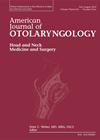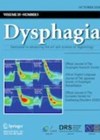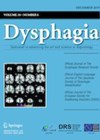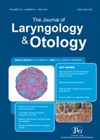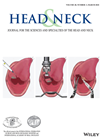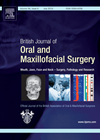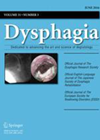
Journal Reviews
Active surveillance for papillary thyroid cancers – what is the risk of progression?
Papillary thyroid cancers (PTCs) are generally considered to be indolent malignancies with favourable outcomes. Active surveillance (AS) has consequently been trialled as a management option for small PTCs with no evidence of regional lymph node involvement, especially papillary thyroid microcarcinomas...
Predicting swallowing outcomes post radiotherapy for head and neck cancer
A videofluroscopic swallow study (VFSS), also known as modified barium swallow (MBS) offers a dynamic view of swallow biomechanics and associated swallowing physiology. The authors of this paper investigated whether quantitative timing and displacement measures of key structures involved in...
COVID-19 and medical practice
The pandemic has deeply affected all types of medical and surgical practice and even publications. In this issue, the lead article was on the French consensus on ENT practice during the pandemic. In ENT practice, both patients and health workers...
Modified barium swallow studies: what is the radiation risk?
A modified barium swallow study (MBSS), also called a videofluoroscopy swallowing study uses ionising radiation to assist the clinician in visualising swallowing biomechanics from the oral cavity to the oesophagus. This procedure is currently one of the best methods used...
How effective are our two-week-wait guidelines in picking up head and neck cancer?
With a 30% increase in the incidence of head and neck cancer since 1999 in the UK, it is important that the two-week wait referral guidelines safely encompass all risk factors but also render these urgent referrals based on signs...
Inspiratory peak flow and tracheostomy
The evaluation of the degree of laryngeal obstruction to indicate a tracheostomy has always been a subjective decision. The authors correlated the visual laryngeal obstruction by flexible nasolaryngoscopy and the peak inspiratory flow using a pocket peak inspiratory flowmeter. Twenty-two...
Impact of the updated cancer staging system on HPV-positive disease
The AJCC cancer staging manual was updated in 2017 (8th edition). It is used in the MDT setting for planning treatment and assessing prognosis for individual patients, and is also widely used internationally in clinical trials. Unlike previous iterations of...
Oropharyngeal malignancies
The authors retrospectively reviewed 44 patients who underwent a combined transoral and transcervical treatment without mandibulectomy for oropharyngeal malignancy. The combined approach was performed first by a neck dissection followed by transoral excision of the lesion and reconstruction by a...
Management of stage IV pharyngolaryngeal lesions
This is a retrospective study of 63 patients presenting with stage four laryngeal and/or hypopharyngeal squamous cell carcinoma. The aim was to define the factors influencing the oncological and functional outcomes of the patients. All patients had T4 lesions with...
Sentinel nodes and UADT tumours
This is the review of a multicentre study to set practical guidelines for sentinel node techniques (SLN) in upper aerodigestive tract (UADT) squamous cell carcinomas including classical and extended indications. SLN biopsies are strictly indicated in patients with clinically and...
CT chest surveillance for oral cancer patients
Computed tomography (CT) imaging of the chest is performed as part of the assessment of patients with oral cancer to exclude pulmonary metastasis or synchronous cancer. This process is integral to staging of the disease. In some cases, non-specific pulmonary...
Radiation-induced dysphagia in head and neck cancer
This is a helpful reference paper that provides an overview of the biomolecular effects of radiation on the tissues of the upper aero-digestive tract. The authors explain that radiation injuries occur in a repetitive and accruing manner over the duration...

